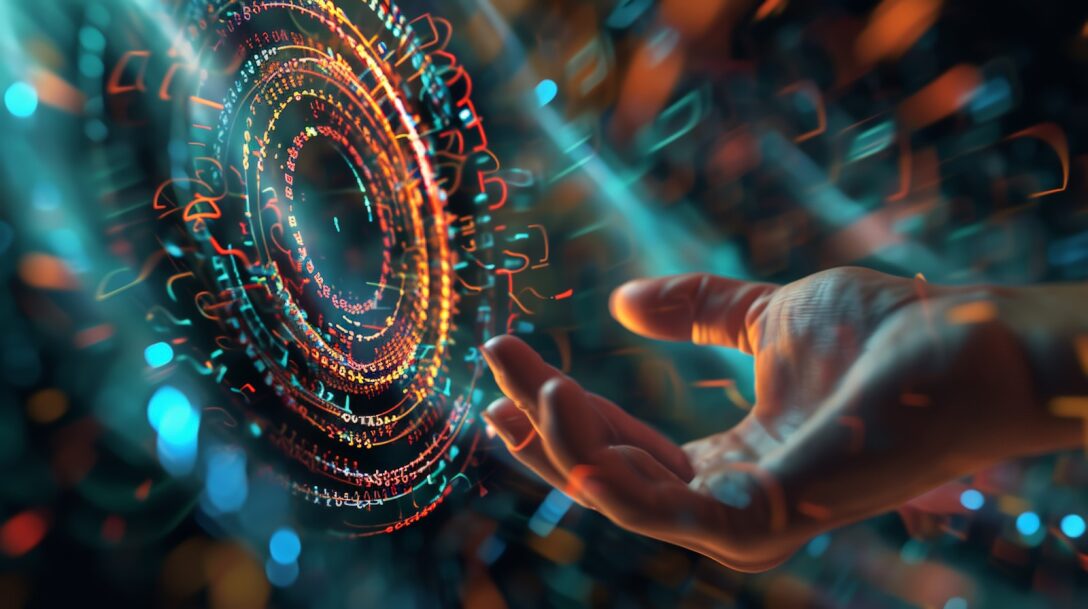The Seed: Supercharging Innovation with LLM-Based Copilots
Akkodis is designing human-in-the-loop, semi-autonomous expert AI agents to facilitate prototype design. Its R&D project, The Seed, is pioneering the technology.
7 minutes
9th of April, 2024

Akkodis’ role in advancing AI and key scientific frontiers
Akkodis has planted The Seed, creating fundamentally new opportunities for playing in the world of ideas. Starting as an innovation project, The Seed is augmenting, enhancing, and supercharging Akkodis’ R&D work. It will enable engineers and digital experts to quickly iterate and explore worlds of ideas without getting bogged down in extensive research on topics outside their own expertise.
Dr. Mehdi Mounsif leads the innovation project. He heads a team of engineers and researchers working on cutting-edge projects in natural language processing, computer vision, and conversational AI.
Beyond chatbots
According to Dr. Mounsif, The Seed goes way beyond chatbots and can be understood as a nursery of specialized agents trained on a tailor-made knowledge base, each with its expertise. Engineers working on a project can supplement their knowledge using these AI agents' capabilities. The Seed even allows for a group of agents to debate, analyze, and synthesize their collective insights. Thus refined, these insights and suggestions are presented to the engineering team for validation, fine-tuning, and prioritization.
With The Seed, we are creating a line-up of highly specialized AI agents to supercharge our R&D. Although a person can have a great idea, he or she could benefit from additional specialist capabilities needed to implement it. Leveraging The Seed, we can have these capabilities at our fingertips, making us much more productive than before.
The Seed will enable Akkodis’ R&D teams to approach complex topics that will become heavily relevant soon, such as robotics or complex system modeling. By stepping into this new era of AI-augmented prototype and strategy development, Akkodis is rethinking expertise, combining human knowledge with the ability of AI agents to rapidly synthesize, debate, and propose a conclusion, adding even more depth and speed to its offerings. In this way, Akkodis is unfolding the complete skills diversity of its engineers and digital experts, allowing for rapid prototyping and supercharging the exploration of ideas.
Cognitive architecture
The Seed is a flexible cognitive architecture developed to facilitate the two main steps of prototype design: ideation and realization. In software, the ideation phase would be the definition of a specific problem and the description of solutions to it. The realization phase would be the coding of a functional prototype or proof-of-concept.
Based on a high-level definition of the objectives, it can build expert agents with knowledge in the relevant field. It could be an expert in cell automation. This specific AI expert will then define a global vision of the prototype to be built, define the interactions between the components and the functionality of the prototype. The result will be a summary of the project, which then can be sent to other AI agents tasked with writing the code for the prototype.

Precision prompts
The approach uses a cascade of precisely engineered prompts leveraging a Large Language Model (LLM) for ideation and brainstorming. Using complex prompting mechanisms and interaction strategies such as self-critique and refinement, the agent framework goes from a high-level vision of a project or task to viewing details from different angles, debating, and applying their various expertise areas to the topic. The result, provided in just a few minutes, serves as a sophisticated decision support service to Akkodis’ researchers, improving their work significantly while saving time and resources.
According to Mounsif, the goal of The Seed is to create agents to automate tasks and to contribute with expert knowledge outside the scope of the predominant area of expertise of the researchers working on a project. In short, The Seed is a way to orchestrate Large Language Models so that they can produce actions. Using The Seed, the models are not limited to giving simple text answers but will produce code. This code is then executed so they can use the results to plan the next step of the iteration process.
Orchestration is key
The key to using LLMs to create specialist AI agents is orchestrating the models. The secret is knowing how to decompose the task given to them, to avoid answers that will be too broad and average and therefore useless.
This is often called Prompting, but the architecture of The Seed relies on a technique called Retrieval-Augmented Generation, RAG. RAG is used in natural language processing and combines the power of both retrieval-based models and generative models to enhance the quality and relevance of generated text. The technology also reduces the chances that an LLM will “hallucinate” incorrect or misleading information.
Initially, the model requires a base of knowledge, for instance, using RAG, it will find the most similar examples to the tasks it has been given. The model then uses those as a referential to advance. It can be fed with research papers or previous conversations, and when asked a question, it looks for similarities, cross-referencing it with the small pieces in the corpus closest to the query. Those can be retrieved to give context to the answer, making the LLM much more precise and useful. RAG is a potent technique, especially when combining the LLM with private or niche data.
Logic and code
One key feature of The Seed is doing RAG not on conventional, text-based information but logic and code. According to Mounsif, this methodology is different from, for instance, the AI-powered programming assistant Github Copilot. While applications like Copilot can assist developers in writing code, Mounsif wants the AI agents to be able to produce code by themselves with limited supervision.

Mounsif has set up The Seed to answer in code when asked a question. To do that, the query first goes into a specific database, where he has set out several logical parameters. The database contains examples of how he has previously decomposed similar questions and broken them into pieces. The AI agent then uses the expert knowledge provided by Mounsif to come up with an answer to his new question. It is not looking for specific information on the Internet but looking for the logic behind it.
For example, Mounsif wants the model to download a research paper, read it, and process it. When given this task, the agent can know that it has to produce code, download the paper, and put it in a folder. It does that automatically. It knows how to create and execute the code to get the paper downloaded. Then, it takes the next step and finds out what to do with the paper. It says, “OK, I have to parse it and then figure out an answer to the initial question.” This logic is extracted from the small knowledge base containing plans that tell the model how to perform a specific task. Then, by combining several examples, the model produces a new example adapted to the current context.
Empowering collaboration: the versatile capabilities of The Seed"
Another key feature of The Seed is its ability to learn from its users quickly and extend its knowledge bases to provide automated workflows in a wide range of tasks, such as domain-specific logic, specialized code, research support, communication via reports and slides, and much more.
Furthermore, The Seed is being extended beyond the capabilities mentioned above. In the future, The Seed can connect with the latest academic research and integrate it into the insights and suggestions it produces.
With The Seed, we are not only creating a line-up of highly specialized AI agents to supercharge our R&D. The expansion of The Seed is also a direct response to our strategic direction, which is firmly rooted in meticulously curated scientific and technical roadmaps. These roadmaps have been instrumental in identifying the key domains and areas that will be pivotal in the future, such as robotics, resilience of societal-scale systems, bioengineering through simulation and modelling.
By nurturing the Seed's features, we plan to engage in and significantly contribute to these crucial fields, thus enabling us to adapt and tackle societal challenges with innovative solutions and foresight.
